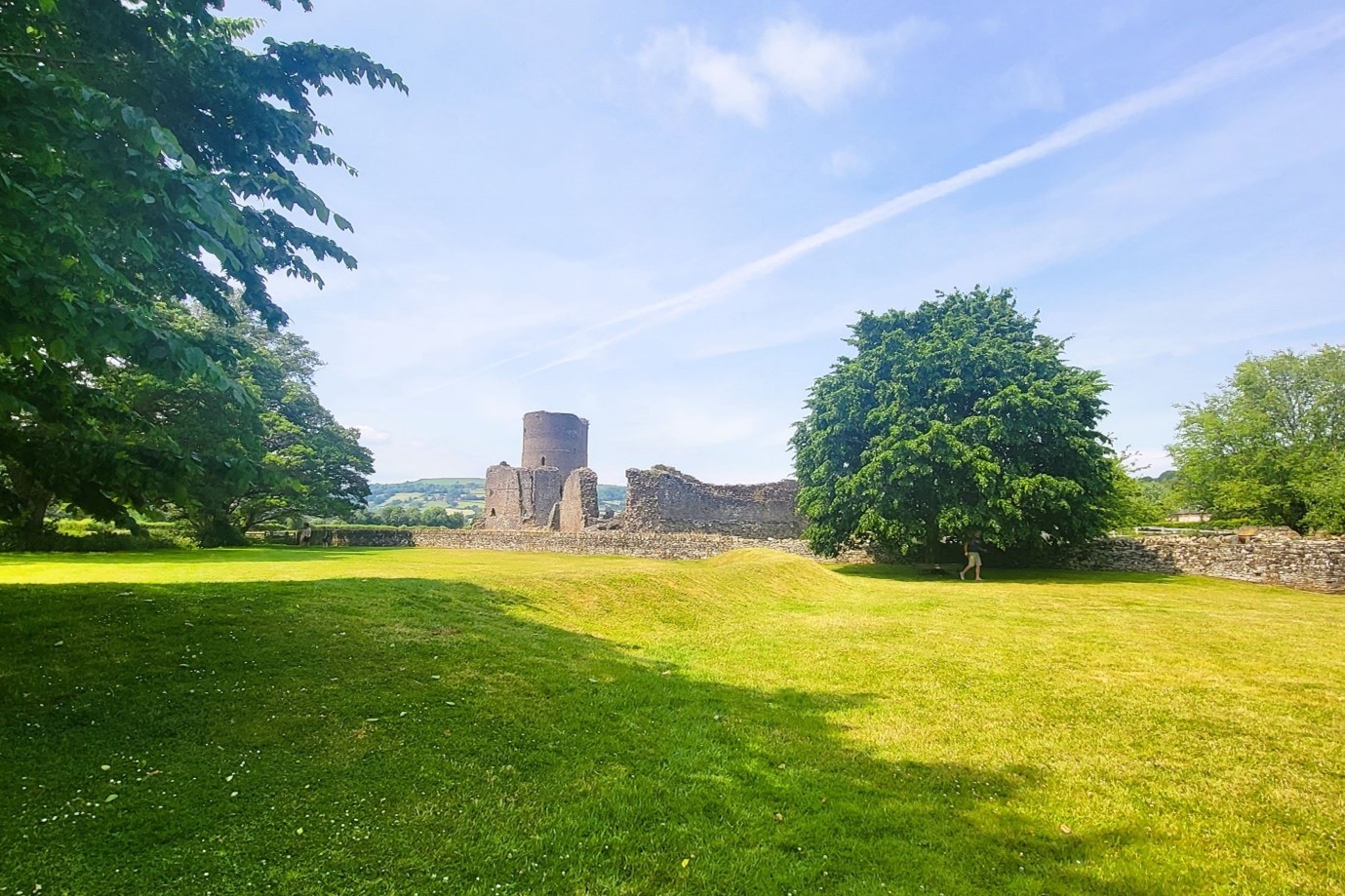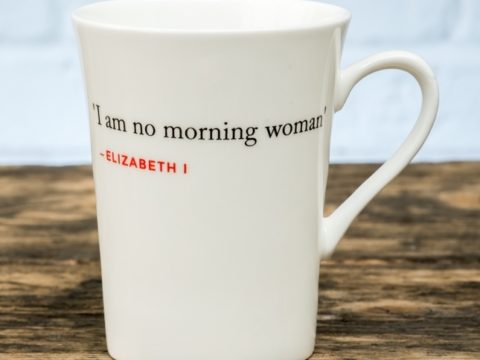Tretower Court and Castle/Llys a Chastell Tretwr
Chapter 2 : Visiting
Crug Hywel/Crickhowell, situated on the River Usk, near the Black Mountains and on the edge of the Bannau Brycheiniog National Park, is known for its charming village centre, full of independent retailers and eateries. Tretower is around three miles away, and it is worth making the trip. Driving north from Crug Hywel, Tretower is not immediately visible, although if you approach from the opposite direction, you can see the remains of Tretower Castle from a considerable distance. The Usk valley has been settled for millennia – directly to the east is the iron age fort at Pentwyn, and somewhat to the west is the Roman fort at Brecon Gaer. Tretower itself is on the valley floor, close to the Rhiangoll, a tributary of the Usk. There are two elements to Tretower, the original twelfth century castle, and the medieval hall house. It is called Llys Tretwr in Welsh, llys meaning a place where royal justice (whether that of the Welsh princes, or the later English kings) was carried out. The site is now owned by Cadw, the branch of the Welsh government responsible for ancient monuments.
Tretower is approached from the north. There is a capacious carpark, and a beautifully renovated barn for ticket sales, in what would originally have been the outer courtyard. Above the visitor centre (where I was delighted to spot that the Tudor Times’ publications the Tudor Book of the Garden and the Tudor Book of Days were on sale) is an excellent café.
On the opposite side of the road from the barn is an enclosed space, once the inner courtyard. This is entered through a stone gateway.
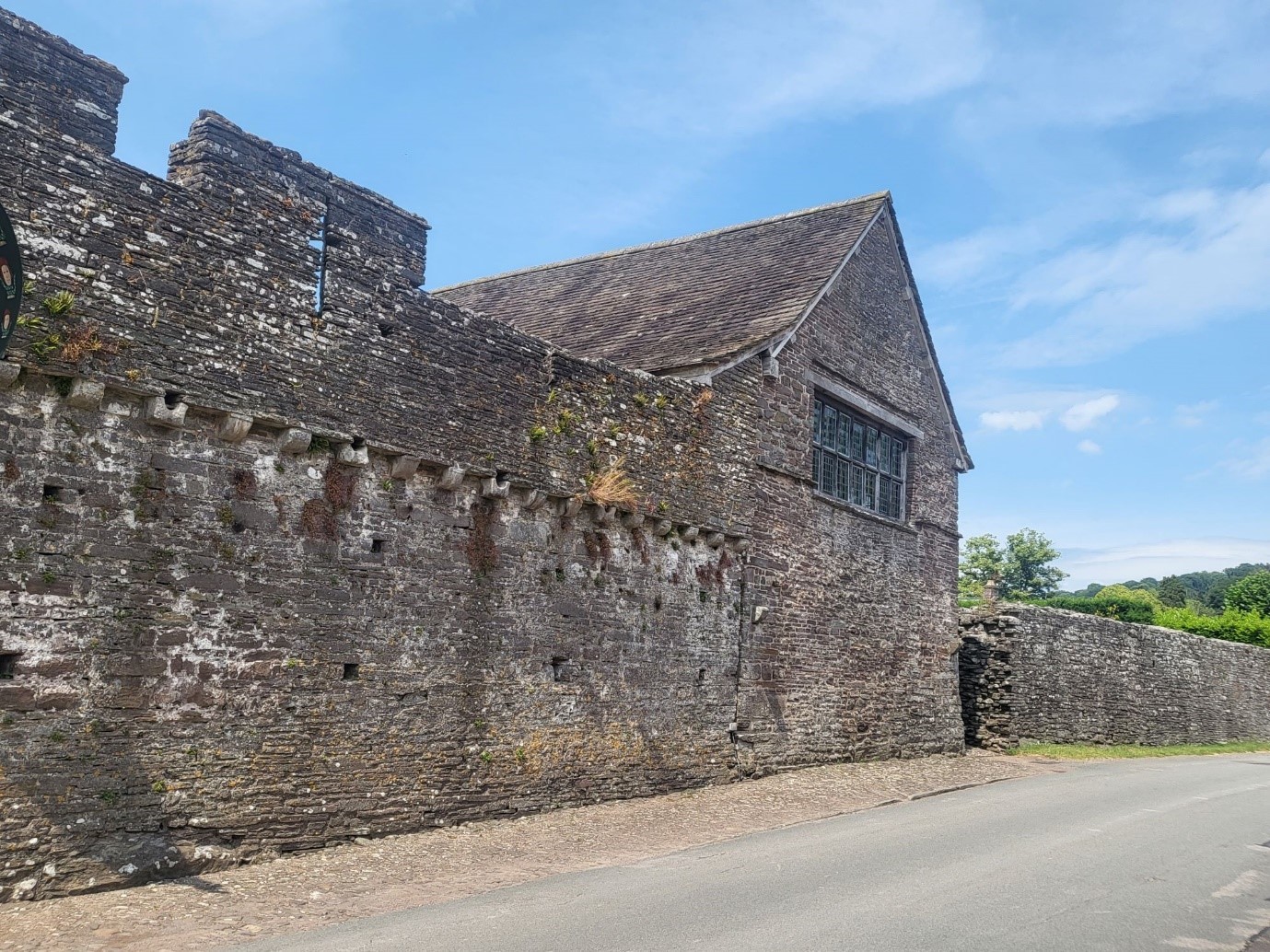
A curtain wall encloses the whole space, with the original living quarters forming three wings: west, north, and south. The west wing was remodelled in the seventeenth century and has larger windows than the medieval original, while the north wing has a splendid half-timbered external gallery along its whole length.
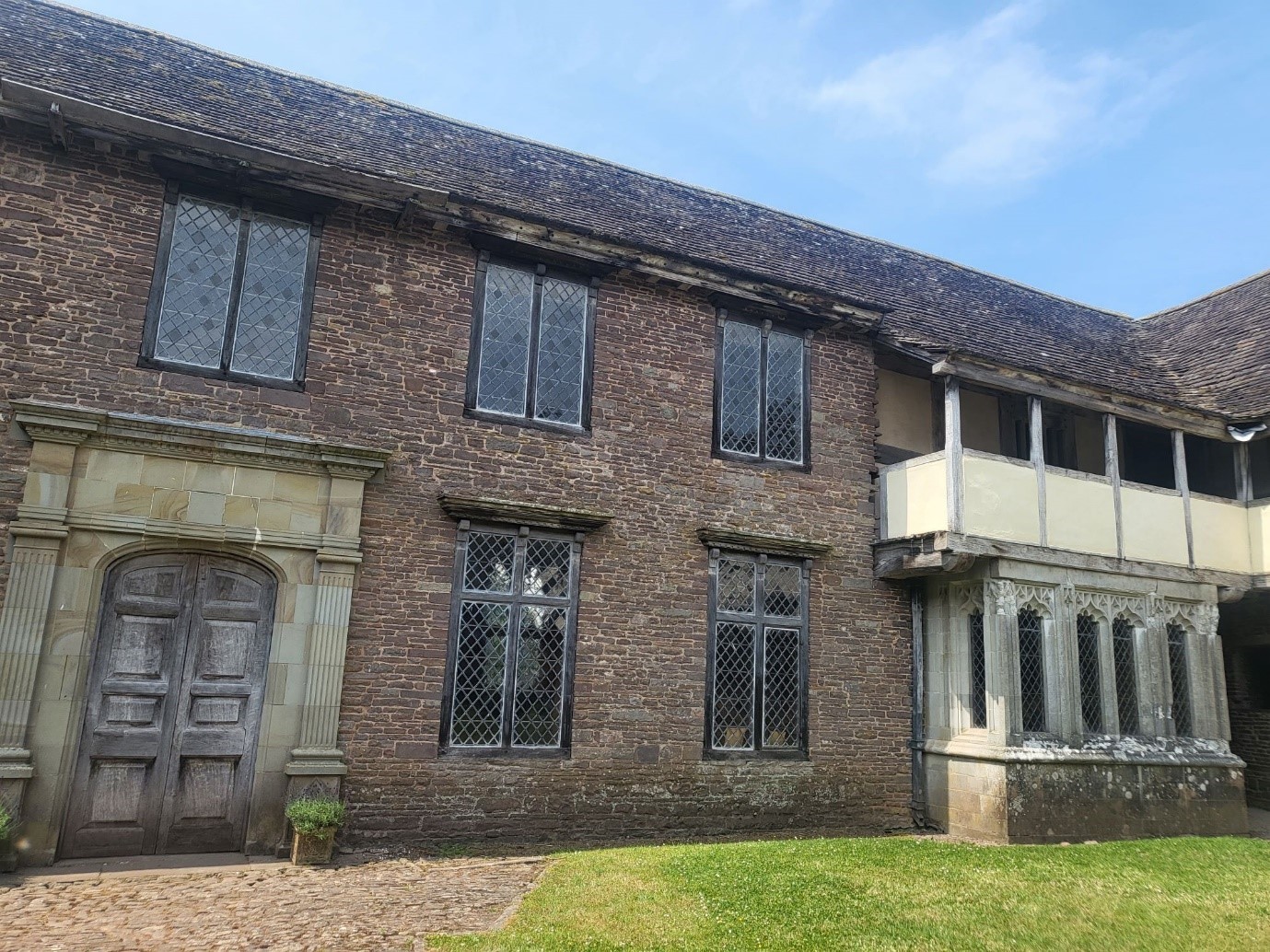
On the ground floor of the north wing are steps leading down to what was probably a cellar for storing the local cider. Sadly, there was none on offer on the day of my visit. Next to the cellar, but at ground floor level, is a chamber that was once divided, but is now a single space. The fireplace in the north wall, and the closed-up doorway that would originally have led to the outer courtyard, have been interpreted as indicating that it was the room of a senior household official, probably the steward, who would have needed easy access between the house and the outer court.
Passing through a gate in the south wing, you find yourself in a delightful garden – although during the house’s heyday, there would have been additional buildings here, probably external kitchens and bakehouses. The arrangement is of two small square plots, one with a water fountain, and both filled with rosa officinalis and rosa gallica – known to the Tudor gardener. My visit was in June and the scent of the roses was almost overpowering. There is an oak pergola, also festooned with scented roses. The path leads between the plots to a small orchard in front, or to the right to enter the house.
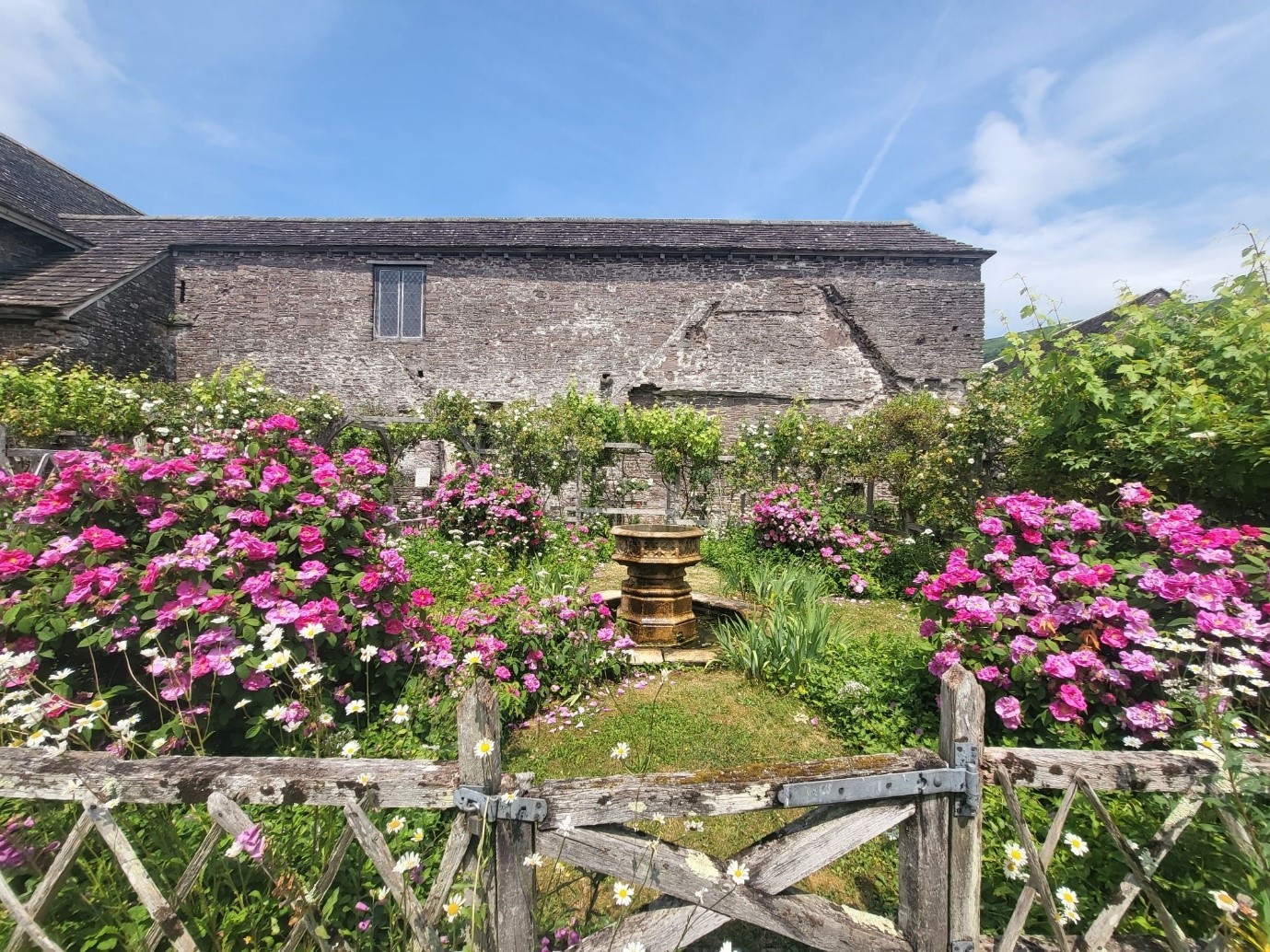
The entrance takes you into what was the Great Kitchen. Cadw’s renovations restored the seventeenth century arrangement, with an upper floor, but in the fifteenth century, it might have been open to the roof. Sir Roger Vaughan’s (d. 1471) hospitality was extravagantly praised by his bards, so we can suppose that the kitchen was permanently busy. Passing through the kitchen, the tour goes past the pantry (bread storage) and the buttery (beer or cider barrels, rather than dairy), through the service passage where the food was given its final tweak before presentation, and into the screens passage, as the area which divides the service part of a hall house from the great hall is known. Originally, the screens passage had an exit on the east side into the courtyard, and on the west into the gardens, but only the latter remains.
Next comes the Great Hall which has been renovated and decorated to represent how it might have looked during the residence of Sir Roger in the 1460s. The roof is a spectacular example of the skilled craftsmanship of the fifteenth century. It is divided into three bays, the trusses sprinkled with carvings of trefoils and quatrefoils. Carbon dating has pinpointed the oak as felled in the 1455-1456. The lord’s dais is positioned on the north wall, and visitors now exit through the door that led into the lord and lady’s withdrawing chamber.
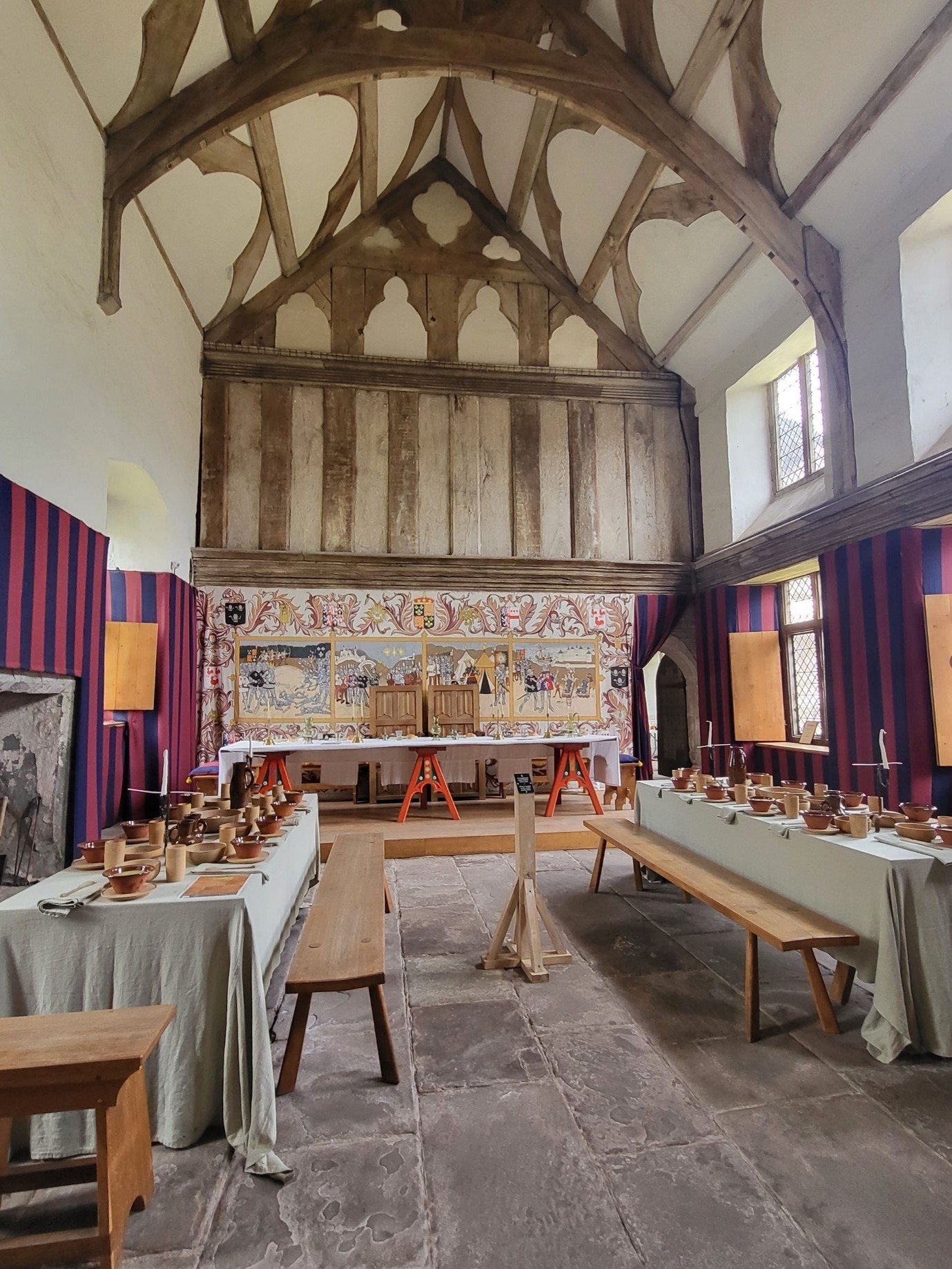
The half-timbered gallery of the north range gives access to two rooms – one smaller, the other a vast space, originally divided into three. Traces of the original wall-paintings can be seen on the infill around the roof trusses. The rooms were clearly high-status, but their exact use is debated, and has certainly changed over time, one possibility being that the divisions were removed during the Elizabethan period to form a fashionable long gallery. At the end of the north gallery, there is an opening onto the east curtain wall, which takes you across the gatehouse, and then turns along the south curtain wall, roofed in during the seventeenth century, to form a connection back to the west range. The final room in the tour is the magnificent chamber over the kitchen and the various service areas. The seventeenth century windows give excellent views towards the castle ruins. Previously at least two rooms, this part of the house was occupied until the 1930s. A further stair case leads back down to the screens passage, through which you can emerge onto the lawns to the west of the house.
Crossing the lawn, in which there is a small embankment to prevent flooding, a route to the original Tretower Castle remains. These consist of a shell keep – that is a central conical tower - surrounded with another wall, with a gap of only a few feet. The remains of the various fireplaces and doors that led to the upper chambers and the solar can still be seen.
During the reign of Henry VIII, John Leland visited Tretower, describing it in his Itinerary… as ‘a pretty castle, now belonging to the king, and thereby also in the village is a fair place of Henry Vaughan…’
